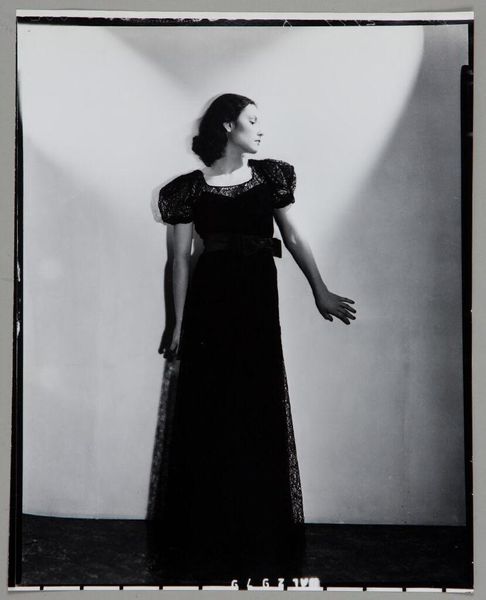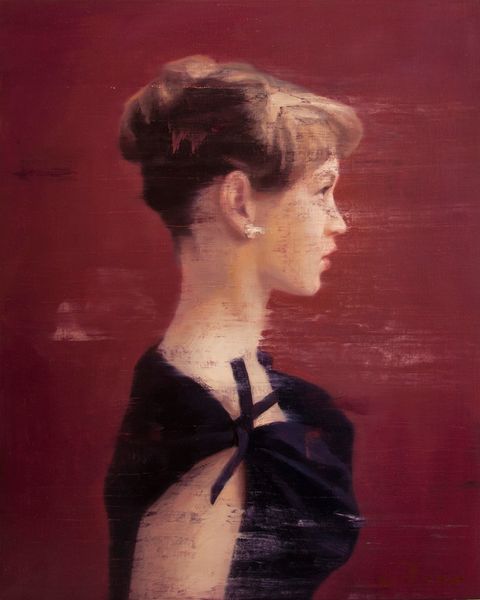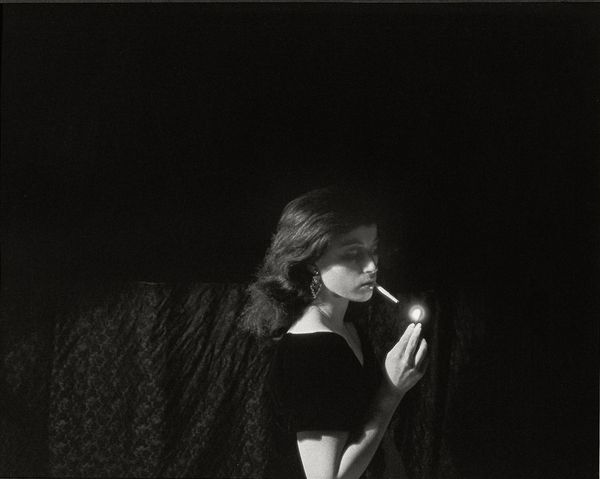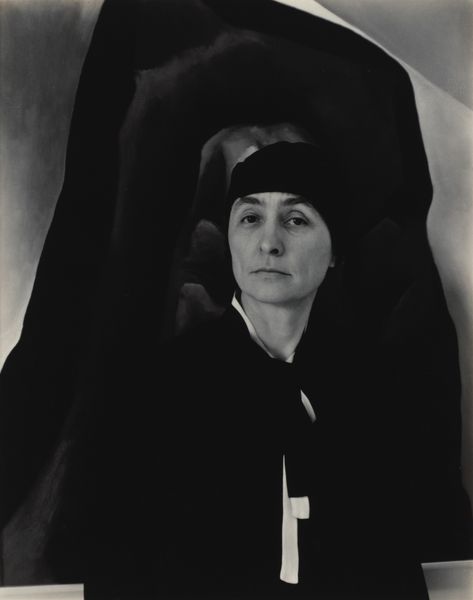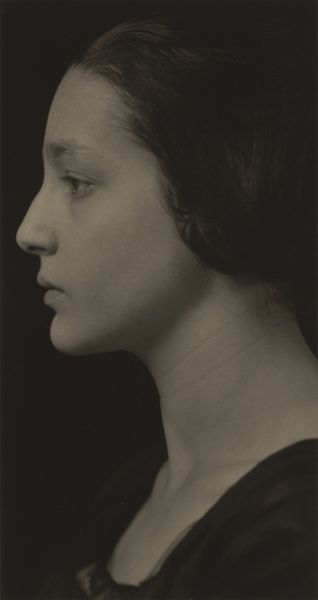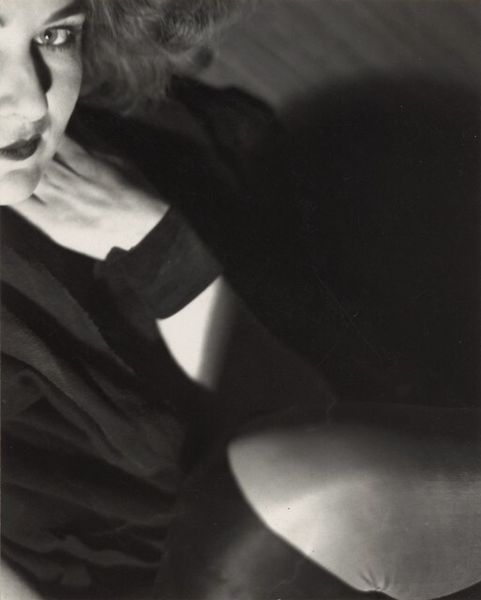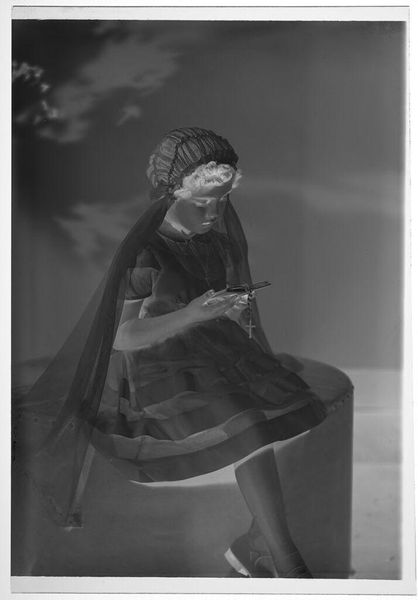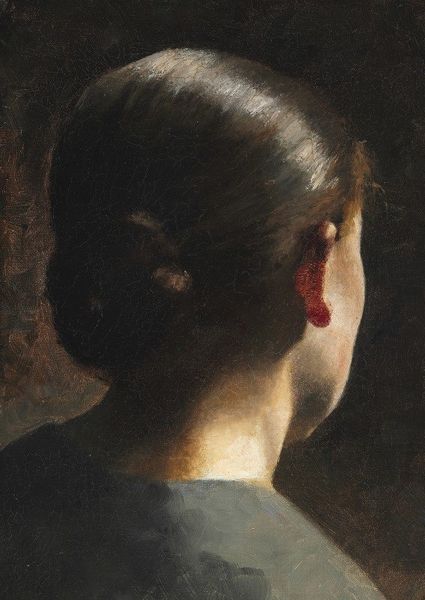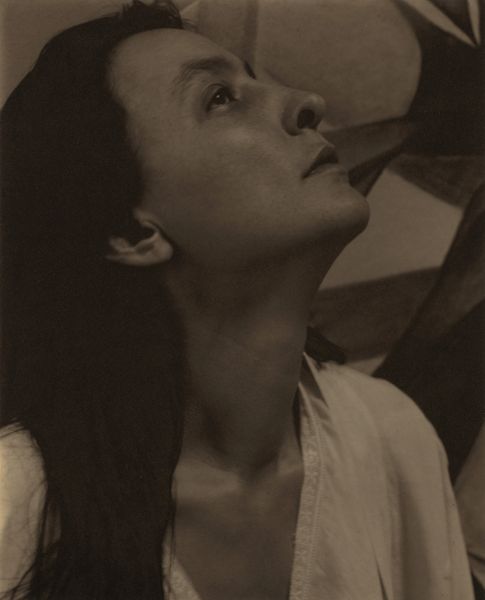
photography
#
portrait
#
contemporary
#
figuration
#
photography
#
capitalist-realism
#
modernism
Copyright: 2019 Gerhard Richter - All Rights Reserved
Curator: In front of us, we have Gerhard Richter's "Reading," created in 1994. The piece presents a contemplative, almost melancholic mood. Editor: My first impression is how soft everything seems, almost like a faded memory. The blurry edges and muted colors give it an incredibly dreamlike quality. Curator: Yes, and that softness is key to understanding Richter’s exploration of representation. Considering its photographic medium, we must ask why Richter seemingly tries to mimic the effect of paintings through blurring, using soft focus and color grading techniques. In some sense, the blurring seems to suggest historical distance from the viewer. The work may address memory's mutability, questioning how easily narratives can be distorted, altered, or romanticized over time. Editor: I’m intrigued by the earrings. Their circular shape feels complete, a stark contrast to the incompleteness of the overall image, or to that half-hidden detail of a necklace along the neck. Is it symbolic of the eternal, something unchanging, set against the ever-shifting nature of memory and history you mention? Also, her downcast eyes suggest introspective thoughts, but also maybe even evasion and withdrawal. Does this signify her distance, both in time and spirit? Curator: That's a compelling reading! Her disengagement could also critique how women are often positioned as objects of observation. By obscuring details and creating this sense of detachment, Richter disrupts that voyeuristic gaze. Additionally, one could even consider the reading material in her hands as a prop. I do wonder how her reading or the act of reading impacts the larger sociopolitical context. Who is this woman, and what is she reading? This invites important interrogations about spectatorship. Editor: Looking closely, I see how the colors shift between warm and cool—balancing shades of mauve and deep umber that both harmonize and push away at the same time. Like visual yin and yang. Ultimately, its composition serves to amplify, or possibly undermine, the subject's isolation and contemplation. Perhaps the ambiguity, rather than providing a single conclusion, mirrors our ongoing struggle to interpret history. Curator: Indeed. Its power lies in its capacity to invite us into an unfolding dialogue that is both personal and broadly socio-political. Editor: Agreed. I leave this work considering how art, memory, and symbolic representations shape how we interpret the past and present.
Comments
No comments
Be the first to comment and join the conversation on the ultimate creative platform.
